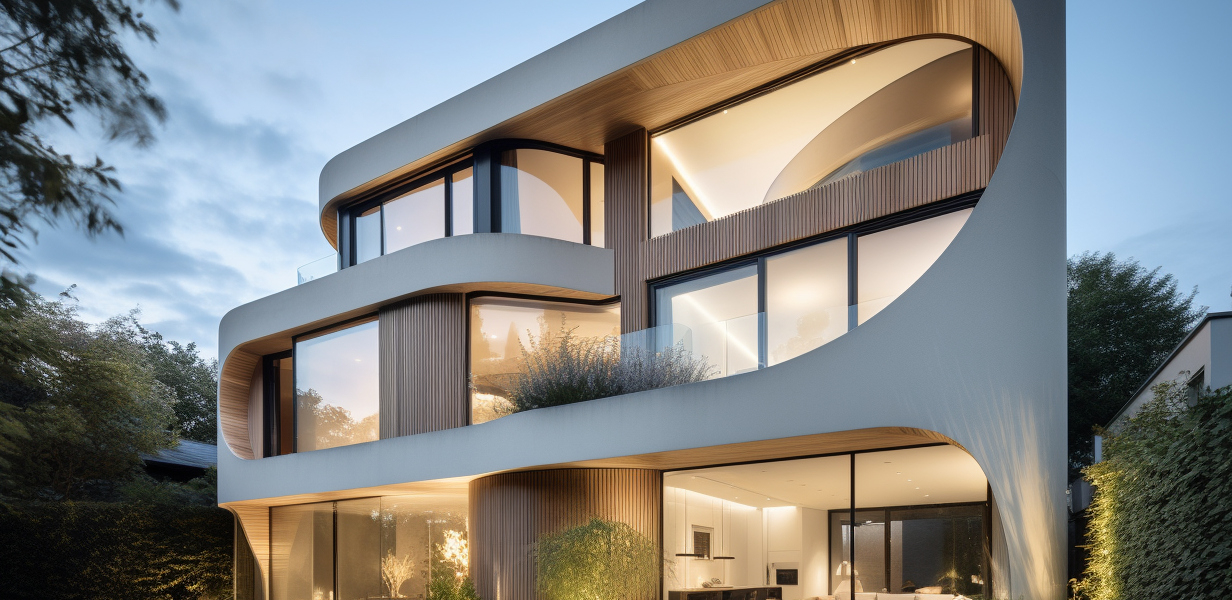Building codes play a significant role in shaping architectural designs today. These codes, established to ensure the safety, health, and general welfare of building occupants, influence everything from structural integrity to energy efficiency. As architectural practices evolve, so do building codes, adapting to accommodate advancements in technology, environmental standards, and societal needs. By adhering to these regulations, architects create spaces that are not only visually appealing but also safe, functional, and sustainable. Here’s how building codes impact modern architectural designs in both practical and aesthetic ways.
1. Ensuring Structural Safety and Stability
The primary purpose of building codes is to protect public safety. Codes regulate aspects like foundation requirements, load-bearing capacities, and resistance to natural disasters. For example, in earthquake-prone regions, building codes require reinforced foundations and flexible structures that can withstand seismic activity. Similarly, in hurricane zones, codes mandate wind-resistant materials and designs.
By incorporating these safety features, architects create buildings that can withstand various natural events without compromising on design. Modern buildings blend structural resilience with architectural aesthetics, allowing for creative freedom within the framework of these safety guidelines.
2. Fire Safety Regulations
Fire safety codes have a considerable influence on architectural design. These codes dictate the inclusion of fire-resistant materials, emergency exits, sprinkler systems, fire alarms, and smoke detectors. The layout of staircases, corridors, and emergency escape routes is designed to meet fire safety standards, ensuring safe evacuation in an emergency.
Architects incorporate fire safety elements seamlessly within a building’s aesthetic, finding ways to design spaces that are both beautiful and compliant with regulations. Fire-resistant materials, for example, are now available in various textures and finishes, enabling architects to achieve visually appealing designs that do not compromise on safety.
3. Accessibility Requirements
Building codes also include accessibility standards to ensure that all individuals, regardless of ability, can use and navigate buildings safely. In many countries, the Americans with Disabilities Act (ADA) or similar laws mandate features like ramps, elevators, wide doorways, accessible bathrooms, and appropriate signage.
These requirements influence how architects design entrances, exits, and interior layouts. For instance, an architect designing a shopping center must consider wheelchair accessibility when planning the layout. Such considerations ensure inclusivity, making spaces functional for everyone. Today, accessibility features are integrated seamlessly, enhancing both the utility and aesthetic value of a building.
4. Energy Efficiency Standards
Modern building codes emphasize energy efficiency and environmental sustainability, encouraging architects to incorporate energy-saving features in their designs. These standards may include requirements for insulation, energy-efficient windows, heating and cooling systems, and renewable energy sources like solar panels.
Architects can now create energy-efficient designs that align with building codes and reduce the carbon footprint of a building. For example, integrating solar panels into a roof design, using high-efficiency lighting, or incorporating natural ventilation systems can meet energy codes and boost environmental responsibility. Architecte centres de traitement de données Stendel + Reich, for example, specializes in sustainable design practices, creating data centers that comply with energy codes while promoting energy efficiency.
5. Indoor Environmental Quality
Building codes now emphasize indoor environmental quality, addressing aspects like ventilation, air quality, lighting, and temperature control. These regulations are essential in commercial buildings, where a healthy indoor environment can directly impact productivity and comfort. Architects must ensure adequate natural light, efficient HVAC systems, and proper ventilation in their designs.
To meet these codes, architects often integrate large windows, skylights, and green building materials that improve air quality. High-efficiency HVAC systems, low-VOC paints, and non-toxic materials create healthier indoor environments that meet regulatory standards and enhance occupants’ quality of life.
6. Material and Construction Standards
Building codes outline specific materials that must be used in certain construction types, particularly regarding fire resistance, load-bearing, and durability. These material requirements influence design choices by limiting or encouraging the use of certain materials. For instance, codes may require concrete in high-rise buildings for its durability and load-bearing capabilities, while residential buildings may have more flexibility with wood framing.
While codes sometimes limit material choices, architects often turn this into an opportunity to use innovative materials. Sustainable and recycled materials, for example, can meet code requirements while enhancing the building’s environmental value. Materials now come in an array of colors and finishes, allowing architects to create diverse visual effects within code constraints.
7. Design Flexibility and Variances
Although building codes set clear requirements, they also allow for flexibility in certain situations through variances or exceptions. A variance enables architects to deviate slightly from the code while maintaining safety and compliance. For instance, in cases where strict adherence to codes would disrupt a historic building’s character, architects may seek a variance to preserve its unique design.
In other cases, architects may propose alternative designs that achieve the same safety objectives as the code requirements but in a different way. This flexibility allows architects to innovate, creating spaces that meet safety standards without compromising creativity.
8. Impact on Aesthetic Choices
While building codes are primarily functional, they often influence aesthetics as well. For instance, height restrictions in certain areas can limit the number of floors a building may have, impacting its overall form and appearance. Likewise, codes requiring a certain percentage of green space or specific setback distances shape the layout and external look of buildings.
Rather than stifling creativity, these regulations often inspire architects to find new design solutions. An architect might use green roofs or vertical gardens to meet green space requirements, adding beauty and sustainability to the building. Similarly, setback requirements can lead to innovative façade designs that respect code while enhancing visual appeal.
Conclusion
Building codes are essential to the modern architectural process, setting standards that ensure safety, sustainability, accessibility, and overall functionality. While they may present certain design constraints, these codes also inspire architects to find creative solutions that meet regulatory requirements without sacrificing aesthetics. By understanding and integrating building codes into their designs, architects create structures that are not only visually compelling but also safe, energy-efficient, and inclusive.
Architects like those at architecte centres de traitement de données Stendel + Reich demonstrate how to work within these codes to design functional, sustainable, and innovative buildings that meet the demands of today’s urban landscapes. As building codes continue to evolve, architects will continue to adapt, finding new ways to merge safety, beauty, and sustainability in modern architecture.










